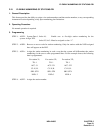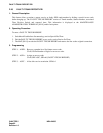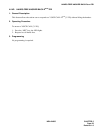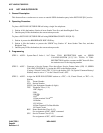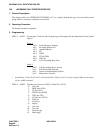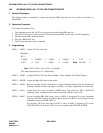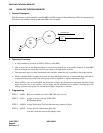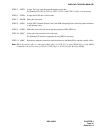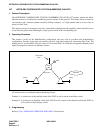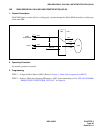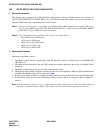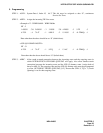
CHAPTER 5 NDA-24305
Page 88
Revision 1.0
INCOMING ISDN CALL TO TIE LINE CONNECTION-PRI
I-25 INCOMING ISDN CALL TO TIE LINE CONNECTION-PRI
1. General Description
This feature permits an Attendant to connect an incoming ISDN network call, via a tie line, to a station at a
distant PBX.
2. Operating Procedure
To Connect an Incoming Call:
1. The Attendant presses the “LDN” key and answers the incoming PRI trunk call.
2. Dial the Tie Line access code; receive Dial Tone from distant PBX. (in the case of 2nd DT signaling)
3. Dial the distant PBX extension number.
4. Press the “RELEASE” key.
5. The Tie line and trunk call are connected.
3. Programming
STEP 1: ARTD - Assign Tie Line route data.
<Example>
STEP 2: ATRK - Assign the LENs, TIE Line Route Number, Trunk Number, and Tenant Number.
STEP 3: MBTK - Assign the Make Idle status to the trunks.
STEP 4: ANPD - Reserve a number level for trunk access. Assign Connection Indexes (CI) for Normal and
Hooking. Number of Necessary Digits is usually 1 or 2. Busy Lamp Field is not activated.
STEP 5: ASPA - Assign the access code as assigned in ANPD above. Type of Service, SRV = OGC/LCR
Outgoing Trunk. Assign the route number associated with this access code.
STEP 6: ARSC - For the incoming PRI (Bch) route, allow for RRI: 0, Incoming Call via the Attendant
Console (with Call Transfer). This Route Restriction Class (RSC) is to be assigned for the
Attendant Console in ATRK. (RSC 0).
For outgoing TIE Line route and for RSC 0, allow for RRI: 2 Outgoing Call via the
ATTCON (with Call Transfer). RSC 0 is to be assigned to the ATTCON in ATRK.
RT : 1
1-OSGS : 2 2-ONSG : 3 3-ISGS : 2 4-INSG : 3 5-TF : 3
6-TCL : 4 7-L/T : 1 8-RLP : 2 15-LSG : Note 28-ANS : 1
Note:
CDN15 (LSG)=4 (for LDT), 5 (for E&M)
The other data must be set “0” (default data).




